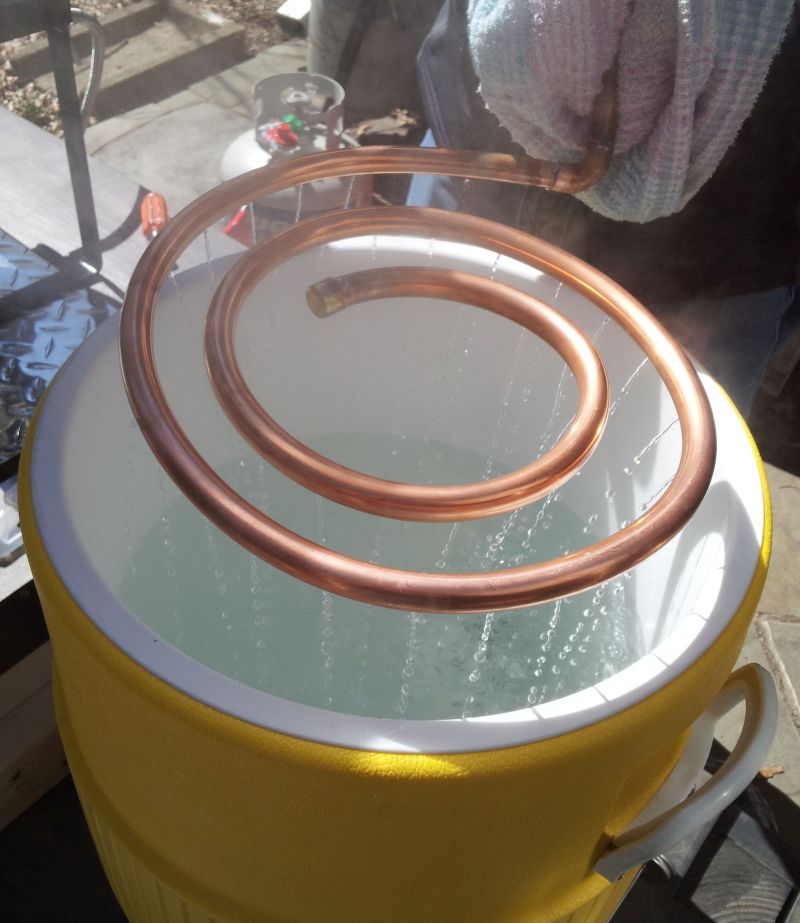A Hot Water Run-Through
After a move across country to a significantly higher altitude, I wanted to a) make sure all our equipment survived the trip b) gauge how we would need to adjust our brewing process for the new altitude and c) refine the one messy part of our process – the chiller loop. So I scrounged through boxes to find my brewing log, then J and I set up a hot water test.
When we first upgraded our brewing system this spring, we conducted a full hot water test to assess if our equipment, setup and process worked properly from start to finish before any wort was at stake. We also measured a number of factors that contributed to the system’s efficiency and the length of our brewing day. For that test, we gauged…

- Time to bring the hot liquor tank (HLT) to temperature (173 degrees Fahrenheit, for testing purposes)
- Loss of heat transferring water to the mash tun (to attain a 168-degree mash temp)
- Loss of heat during a 60-min mash
- Temperature of water through the sparge arm from the HLT
- Time to bring the kettle to a boil
- Evaporation during a 60-minute boil
- Temperature of wort after running through the plate chiller (how quickly it chills and how to adjust flow rate to hit target wort temperature)
This time, our goals were more specific so we kept the test short. Although we only tested water in the kettle, it provided a quick run-through of what a full brew day might be like in our new location. The most important discoveries:
- We reached a rolling boil around 200 degrees. We may need to make adjustments for this cooler boiling temperature (such as the amount of water we’ll need to reach target mash temperature or the amount of hops we’ll need to achieve our target bitterness).
- We found a comfortable, functional method for controlling how quickly the plate chiller cools the wort so we can more accurately hit our target temperature for pitching the yeast (more on this in another post).
Comfortable with the results, we’re ready for a our first Colorado brewing day!
Have you done similar testing? What other metrics would you find helpful?